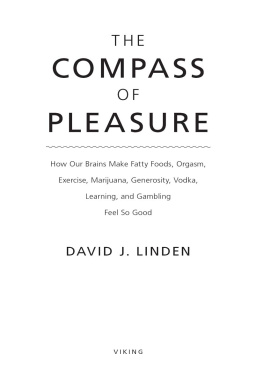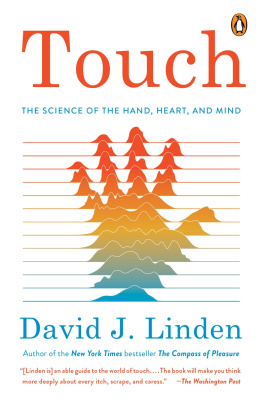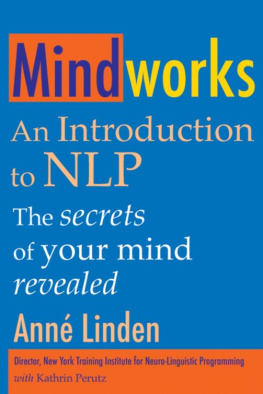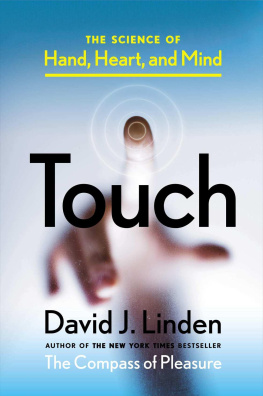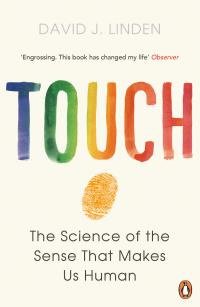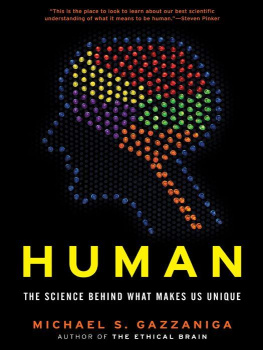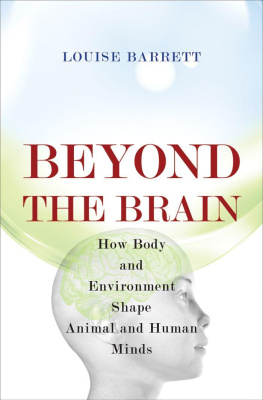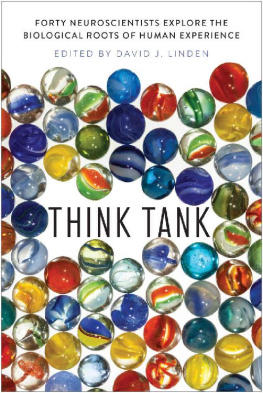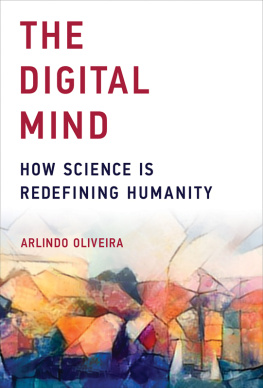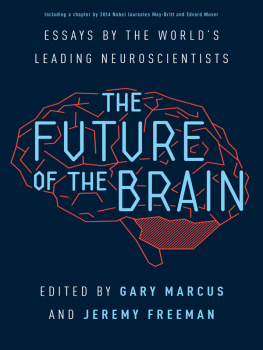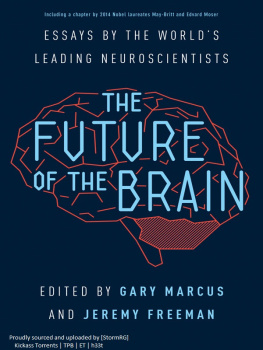THINK TANK
EDITED BY DAVID J. LINDEN
THINK TANK
FORTY NEUROSCIENTISTS EXPLORE THE
BIOLOGICAL ROOTS OF HUMAN EXPERIENCE

Published with assistance from the foundation established in memory of Calvin Chapin of the Class of 1788, Yale College.
Copyright 2018 by David J. Linden. All rights reserved. This book may not be reproduced, in whole or in part, including illustrations, in any form (beyond that copying permitted by Sections 107 and 108 of the U.S. Copyright Law and except by reviewers for the public press), without written permission from the publishers.
Yale University Press books may be purchased in quantity for educational, business, or promotional use. For information, please e-mail (U.K. office).
Set in Scala & Scala Sans type by Integrated Publishing Solutions, Grand Rapids, Michigan.
Printed in the United States of America.
Library of Congress Control Number: 2017955418
ISBN 978-0-300-22554-9 (hardcover : alk. paper)
A catalogue record for this book is available from the British Library.
This paper meets the requirements of ANSI/NISO Z39.48-1992 (Permanence of Paper).
10 9 8 7 6 5 4 3 2 1
Ornament: Computer artwork of a nerve cell, also called a neuron. Alfred Pasieka / Science Photo Library (adapted).
CONTENTS
David J. Linden
William B. Kristan, Jr., and Kathleen A. French
Jeremy Nathans
Alex L. Kolodkin
Sam Wang
Amy Bastian
Linda Wilbrecht
Melissa Lau and Hollis Cline
Alison L. Barth
Julie Kauer
Indira M. Raman
Liqun Luo
Solomon H. Snyder
Aniruddha Das
Charles E. Connor
Paul A. S. Breslin
David D. Ginty
Allan Basbaum
Marshall G. Hussain Shuler and Vijay M. K. Namboodiri
David Foster
Cynthia F. Moss
Scott T. Albert and Reza Shadmehr
John W. Krakauer
Adrian M. Haith
Darcy B. Kelley
Gl Dlen
Peggy Mason
Lucy L. Brown
David J. Linden
Yael Niv
Michael Platt
Anjan Chatterjee
Scott M. Sternson
Asif A. Ghazanfar
Terrence Sejnowski
Miguel A. L. Nicolelis
Michael D. Mauk
PREFACE
Scientists are trained to be meticulous when they speak about their work. Thats why I like getting my neuroscience colleagues tipsy. For years, after plying them with spirits or cannabis, Ive been asking brain researchers the same simple question: What idea about brain function would you most like to explain to the world? Ive been delighted with their responses. They dont delve into the minutiae of their latest experiments or lapse into nerd speak. They sit up a little straighter, open their eyes a little wider, and give clear, insightful, and often unpredictable or counterintuitive answers.
This book is the result of those conversations. Ive invited a group of the worlds leading neuroscientists, my dream team of unusually thoughtful, erudite, and clear-thinking researchers, to answer that key question in the form of a short essay. Although I have taken care to invite contributors with varied expertise, it has not been my intention to create an informal comprehensive textbook of neuroscience in miniature. Rather, I have chosen a diverse set of scientists but have encouraged each author to choose her or his own topic to tell the scientific story that she or he is burning to share.
But lets face it: most books about the brain are not written by brain researchers, and most of them are not very good. Many are dull, and those that are readable are often uninformed or even fraudulent. This is the age of the brain, but thoughtful people have become understandably skeptical, having been inundated by a fire hose of neurobullshit (looking at the color blue makes you more creative or the brains of Republicans and Democrats are structurally different). I believe that readers hunger for reliable and compelling information about the biological basis of human experience. They want to learn what is known, what we suspect but cannot yet prove, and what remains a complete mystery about neural function. And they want to believe what they read.
The purpose of this book is not to launch a screed against neurobullshit but rather to offer an honest, positive recounting of what we know about the biology that underlies your everyday experience, along with some speculation about what the future will hold in terms of understanding the nervous system, treating its diseases, and interfacing with electronic devices. Along the way, well explore the genetic basis of personality; the brain substrates of aesthetic responses; and the origin of strong subconscious drives for love, sex, food, and psychoactive drugs. Well examine the origins of human individuality, empathy, and memory. In short, well do our best to explain the biological basis of our human mental and social life and the means by which it interacts with and is molded by individual experience, culture, and the long reach of evolution. And well be honest about what is known and what is not. Welcome to the think tank!
David J. Linden
Baltimore, USA
THINK TANK
Primer
OUR HUMAN BRAIN WAS NOT DESIGNED ALL AT ONCE BY A GENIUS INVENTOR ON A BLANK SHEET OF PAPER
David J. Linden
THIS IS MY ATTEMPT to boil down the basic facts of cellular neuroscience into a small cup of tasty soup. If youve already studied neuroscience or you like to read about brain function, then youve likely heard much of this material before. I wont be offended if you skip this part of the meal. But if you havent or if youre looking for a refresher, this section will serve to bring you up to speed and prepare you well for the essays that follow.

Around 550 million years ago it was simple to be an animal. You might be a marine sponge, attached to rock, beating your tiny whip-like flagella to pass seawater through your body in order to obtain oxygen and filter out bacteria and other small food particles. Youd have specialized cells that allow parts of your body to slowly contract to regulate this flow of water, but you couldnt move across the sea floor properly. Or you might be an odd, simple animal called a placozoan, a beast that looks like the worlds smallest crepea flattened disc of tissue about 2 millimeters in diameter with cilia sprouting from your underside like an upside-down shag carpet. These cilia propel you slowly across the sea floor, allowing you to seek out the clumps of bacteria growing on the sea floor that are your food. When you found a particularly delicious clump, you could fold your body around it and secrete digestive juices into this makeshift pouch to speed your absorption of nutrients. Once digestion was finished, you would then unfold yourself and resume your slow ciliated crawl. Remarkably, as either a sponge or a placozoan, you could accomplish all sorts of useful taskssensing and responding to your environment, finding food, moving slowly, and reproducing yourselfwithout a brain or even any of the specialized cells called neurons that are the main building blocks of brains and nerves.
Neurons are wonderful. They have unique properties that allow them to rapidly receive, process, and send electrical signals to other neurons, muscles, or glands. The best estimates are that neurons first appeared about 540 million years ago in animals that were similar to modern-day jellyfish. We arent sure why neurons evolved, but we do know that they appeared at roughly the same time that animals first started to eat each other, with all of the chasing and escaping that entails. So its a reasonable hypothesis that neurons evolved to allow for more rapid sensing and movement, behaviors that became useful once life turned into a critter-eat-critter situation.
Next page

